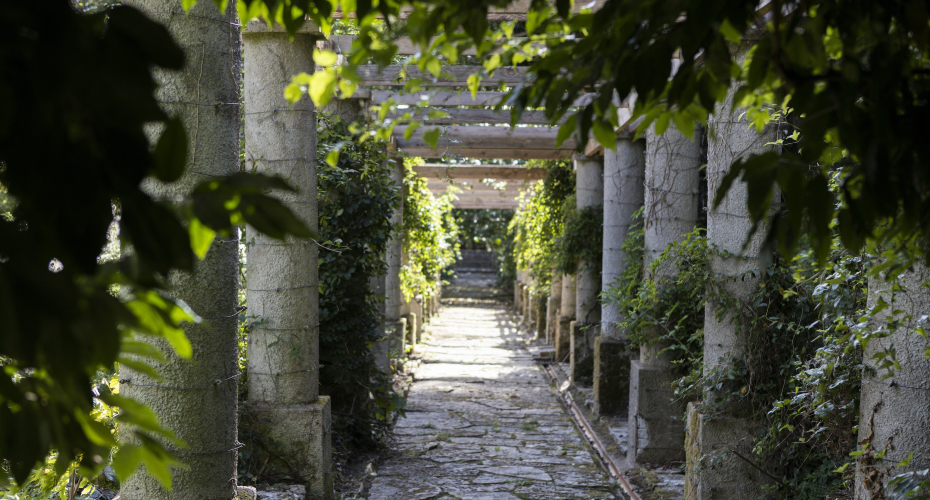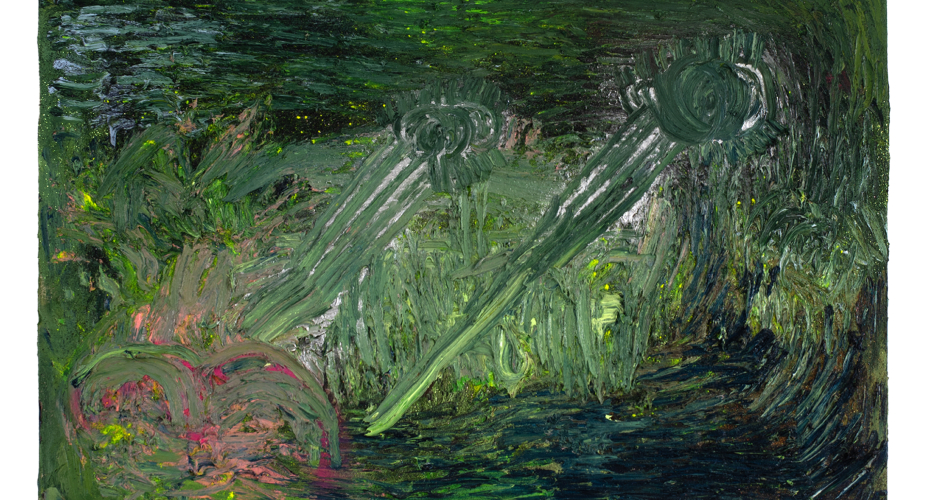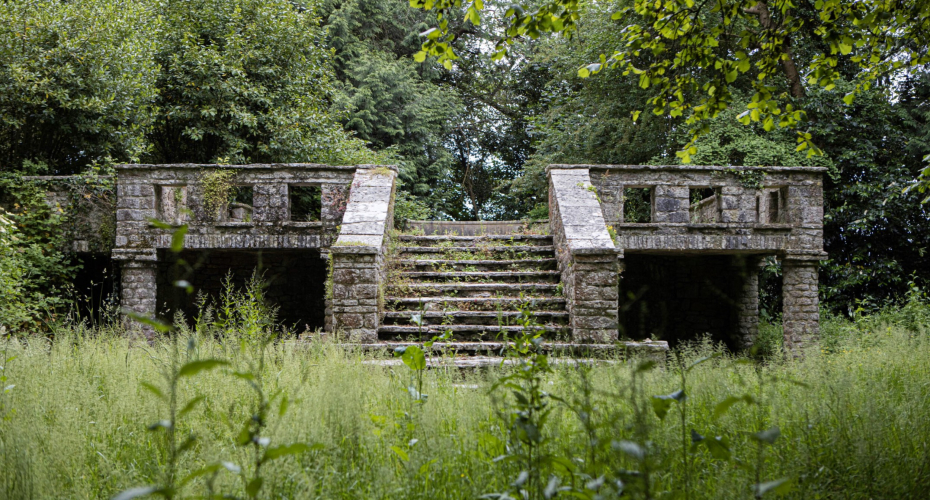Rediscovered ‘secret garden’ set to stage arts installation developed in partnership with University researcher

A secret garden in South Devon that served as a safe space for gay men in the early 20th century before being ‘lost’ for decades is to host an exhibition that brings together contemporary art and academic research.
The Italian Garden at Great Ambrook, in Ipplepen, was built by Thomas Henry Lyon for Arthur Smith Graham between 1909 and 1912, and featured pools, landscaped walks, and a tennis court, where Graham entertained friends and hosted intimate gatherings in an era when homosexuality was criminalised.
An acquaintance of Oscar Wilde, Graham had moved to Devon in 1899 in the wake of Wilde’s trial and subsequent imprisonment under indecency laws.
Opening this week, In Holes and Corners – developed by artist James Cabaniuk and Professor Kate Hext of the University of Exeter – draws together the history of the garden with the history of gay repression.
Through painting, mixed media, and the writing of Professor Hext, the installation has been integrated into the garden, creating a literary trail that explores themes including privacy and identity.
“This is a unique opportunity to learn something new about this secret place, a garden that people simply did not know existed,” says Professor Hext, Associate Professor of Decadent Literature and the Arts, in the Department of English and Creative Writing. “Working with James and the team here at Great Ambrook, we have created an installation with a ‘hanky trail’ through the history of queer art and culture, and places that back into the garden, reflecting its status as something simultaneously safe and radical.”

Professor Hext has been working with the owners of Great Ambrook, as part of a three-year National Heritage Lottery Fund project, to provide the historical and cultural context to Arthur Smith Graham. This has included the delivery of a series of public talks over the summer, and an exhibition and pamphlet planned for next spring.
This four-acre walled garden, which was located a short walk from the house, boasted a stunning terrace, and several unusual structures including a pergola and observatory. Together, these afforded Graham the privacy to entertain friends and relax without fear of scrutiny and prosecution.
Following Graham’s death in 1928, the estate changed hands several times and fell into neglect during the 1960s, whereupon it was subsumed by woodland. But the garden was discovered again in 1988 and cleared, and its current owners are now working to restore it, with its original layout still visible today.
Cabaniuk – who lives and works between Manchester and London – is renowned for his art that draws upon personal histories to debunk myths of shame around trauma and queer identity.
“The exhibition invites visitors to contemplate how LGBTQ+ communities experience time and space differently,” he said. “I’m hoping that it will also prompt them to consider how Graham’s original vision of the garden as private retreat transforms when open to the public today.”
The exhibition is open to the public on Wednesday 25 September, with talks from Cabaniuk and Professor Hext, and then open by appointment only from 26 – 27 September.
For more details, visit the Italian Garden website.




